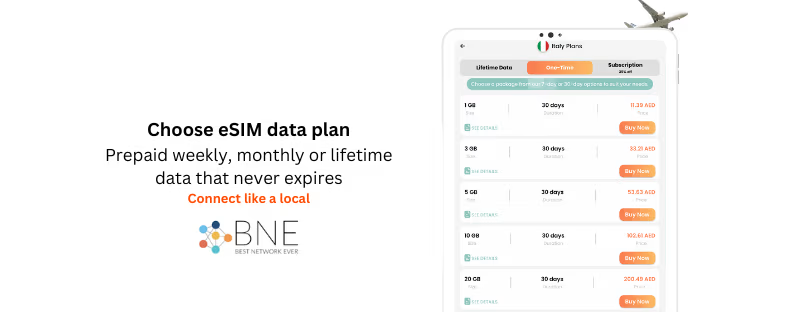
What is a SM-DP+ Server? Understanding the Backbone of eSIM Provisioning
The telecommunications industry is undergoing a major shift with the rise of eSIM technology, replacing traditional SIM cards that have served mobile networks for over two decades. Central to this transformation is the SM-DP+ server, a critical element that enables remote SIM provisioning by securely delivering digital mobile subscription profiles to devices.
This article explores the role of the SM-DP+ server within the broader eSIM provisioning architecture, how it works, and why it’s essential to the mobile ecosystem.
What Is an SM-DP+ Server?
The term SM-DP+ stands for Subscription Manager Data Preparation Plus. It refers to a secure server responsible for:
- Preparing digital eSIM profiles
- Storing operator data securely
- Encrypting and delivering profiles to compatible devices
SM-DP+ combines the roles of two previous components used in M2M (machine-to-machine) eSIM applications: SM-DP (Subscription Manager – Data Preparation) and SM-SR (Subscription Manager – Secure Routing). The “plus” version extends these functions for consumer devices.
💡 In this article, we’ll refer to this component as the SM-DP+ server for clarity and consistency.
The eSIM Architecture: Key Components
The eSIM provisioning ecosystem for consumer devices, as defined by the GSMA SGP.22 standard, consists of four core elements:
🔹 SM-DP+ Server
Responsible for:
- Generating, encrypting, and storing eSIM profiles
- Remotely delivering profiles to devices
- Managing the full lifecycle: enable, disable, update, delete
🔹 LPA (Local Profile Assistant)
- Resides on the device (e.g., smartphone)
- Provides the user interface for eSIM profile download and management
- Initiates secure connections to the SM-DP+ server
🔹 eUICC (Embedded Universal Integrated Circuit Card)
- Secure hardware chip embedded in the device
- Stores and runs one or more eSIM profiles
🔹 SM-DS (Subscription Manager – Discovery Server)
- Helps the device discover the correct SM-DP+ server address
- Acts as a secure relay point between the server and the device
These components work together to enable seamless and secure remote SIM provisioning for end-users.
How Remote SIM Provisioning Works
Here’s how the eSIM provisioning process happens step by step:
1. Initiation
The user scans a QR code or clicks a link provided by the mobile operator. This action supplies the device with the address of the relevant SM-DP+ server.
2. Secure Connection
The device establishes an encrypted connection with the SM-DP+ server using HTTPS and TLS protocols.
3. Authentication
The SM-DP+ server verifies the device using unique identifiers like the EID and ICCID associated with the subscription.
4. Profile Creation & Encryption
The eSIM profile is created, including:
- Authentication keys
- APN and roaming settings
- Operator details
It is then encrypted (e.g., AES-256 or RSA-2048).
5. Download & Installation
The device downloads the encrypted profile, decrypts it using its secure element (eUICC), and stores it securely.
6. Activation
The eSIM profile is activated, giving the user access to the mobile network.
Security Measures in SM-DP+ Servers
Security is fundamental in eSIM provisioning, and the SM-DP+ server enforces strong measures:
- TLS encryption for all server-device communication
- Device authentication using unique hardware IDs
- Secure profile storage on the eUICC
- GSMA-mandated compliance certifications:
-
-
SAS-SM (Security Accreditation Scheme for Subscription Management)
-
Functional compliance via GSMA test specifications
-
Only certified SM-DP+ server providers can participate in the GSMA-approved consumer eSIM ecosystem.
Benefits of eSIM and SM-DP+ Technology
➤ For End Users
- Flexibility: Switch operators without needing a new SIM card
- Multiple profiles: Use personal and business lines on one device
- Convenience: Activate plans in minutes
- Travel savings: Add local data plans abroad to avoid roaming charges
➤ For Mobile Network Operators (MNOs)
- Operational efficiency: No logistics for SIM distribution
- Cost reduction: Lower manufacturing and delivery costs
- Analytics: Better data on profile usage and activation
- Profile management: Centralized control over customer subscriptions
➤ For Device Manufacturers
- Design freedom: No physical SIM slot required
- Supply chain simplification: One SKU for global markets
- Improved UX: Smooth, out-of-the-box activation
Adoption and Future Trends
The adoption of SM-DP+ servers and eSIM provisioning is accelerating:
- Flagship devices from Apple, Google, and Samsung already support eSIM.
- Some iPhones have removed the SIM tray entirely in certain markets.
- In the IoT sector, the ability to provision millions of devices remotely is revolutionizing large-scale deployments.
Looking ahead, expect continued standardization improvements, security enhancements, and expansion into new device categories — from wearables to smart vehicles.
Conclusion
The SM-DP+ server is the cornerstone of modern eSIM provisioning. It enables secure, scalable, and flexible mobile connectivity across smartphones, tablets, wearables, and IoT devices. As physical SIM cards become obsolete, remote SIM provisioning through certified SM-DP+ servers will define the future of global mobile access.
Understanding how this technology works isn’t just important for telecom professionals — it’s essential for anyone navigating the evolving landscape of mobile connectivity.











